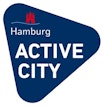4 Ways to Trash Your Training
22 May, 2016

You work hard. Don't throw it all away.
by Dr. Phil Maffetone
As sad as it is, trashed bodies are all too common in triathlon. Chronic illness and injury, fatigue, performance reductions, overtraining and increased body fat are just a few of the widespread signs and symptoms that aren't supposed to be part of this sport. How these symptoms occur vary between athletes, but here are four all too common factors that can keep you from being your best on the race course—and trash your physical and emotional health.
1. Ignoring fatigue
As we all know, muscles fatigue during workouts. Mild fatigue may be less obvious and can help us achieve a healthy state of what's called "overreaching," which means that we are adapting and getting stronger without much harm. But too much training volume and/or intensity can quickly lead to excess fatigue, resulting in muscle weakness, soreness or pain, ligament injuries, fascia, bones, joints and tendons. Among the sport "mantras" that contribute to this is "no pain no gain." More is not better—and, in fact, less may be best. Volume and intensity are two important features of a training program, but too much of either or both can quickly contribute to overtraining—a condition that can sneak in quietly, without early signs or symptoms.
The fix: Avoid workouts that leave you feeling like you just raced. Building an efficient aerobic engine should not result in excess fatigue. This is important because over 95 percent of your competitive energy comes from the aerobic system. Even on relatively hard training days, max efforts, pain and excess fatigue may mean overtraining.
2. Guesswork
Making assumptions about training progress—or waiting for race day to gauge the success of your program—involves guessing. Sometimes, overtraining leads to temporary performance improvements. That’s because the early stage of overtraining revs up the sympathetic nervous system too much, with a temporary burst of increasing strength. But this also signals the start of a downward spiral of poor performance and bodily harm.
The fix: Monitor your training and recovery daily. Part of this is tracking your heart rate (HR) in training, which is a great measure of workout quality, can reflect previous recovery and even help measure movement efficiency (such as running economy). Monitoring your HR can also predict injury and illness, as well as give you a sign of too much volume and intensity (indicated by higher than usual rates for a given workout). It's also related to future performance quality: In a group of triathletes running at the same easy training pace, those with the lowest HR will generally be the most fit. Training progress is associated with faster paces at the same sub-max HR (equal to aerobic or moderately-intense training). This should lead to improved performance as virtually all triathlons are raced in a sub-max state.
3. Focusing on a faster mile
Too often, the lure of speed pushes aside that much-needed sub-max training time. Triathletes should aim to build for sub-max performance—not to be better milers or 400-meter sprinters. Triathlon is an endurance sport with successful training bringing more sub-max speed. Too many think it’s a sprint sport, which it's not, despite the name attached to some race distances. Track intervals, muscle-bulking workouts and high-HR rides may have benefits, but should never replace smart sub-max training.
The fix: A sufficient period of strictly aerobic training. During this time, sub-max paces should increase. For example, if a 35-year-old can run at an 8:30 mile pace today, at a 145 HR, a month of effective aerobic training should increase this pace to 8:10 at the same HR over the same course. After three or more months of aerobic training with increasing paces (and cycling power), one may be ready for harder, anaerobic training. However, most success in triathlon comes from sub-max training, not from interval and other high-HR workouts. In most cases, these types of efforts should be limited to twice weekly for three to four weeks, if done at all.
4. Sole sacrifice
Your feet bring you to the finish line, so don’t abuse them in training—the game is all about finding the shoes that fit and function best. The most important guideline in most cases is the simplest: comfort. Your shoes should feel almost perfectly comfortable during training and racing. This is easier said than done, which is why it’s worth taking time to find the right ones for your feet.
The fix: Find shoes that best match your feet. If yours are not nearly a perfect fit, start looking. Don’t be in a rush to try them on in a store and don’t hesitate to return them if they are not what you need.
Any one of these four factors can trash your triathlon training and sustaining more than one at a time can lead to more trouble than it's worth. The remedy? Flip these factors around—eat real food, be healthy, wear the right shoes, train well, and be conservative. Your body and performance will thank you.
Phil Maffetone is a best-selling author and has advised many of triathlon's greats, including Mark Allen. He is the author of The Big Book of Endurance Training and Racing. Visit him online at Philmaffetone.com











.png?h=106&auto=format)







.png?h=106&auto=format)




